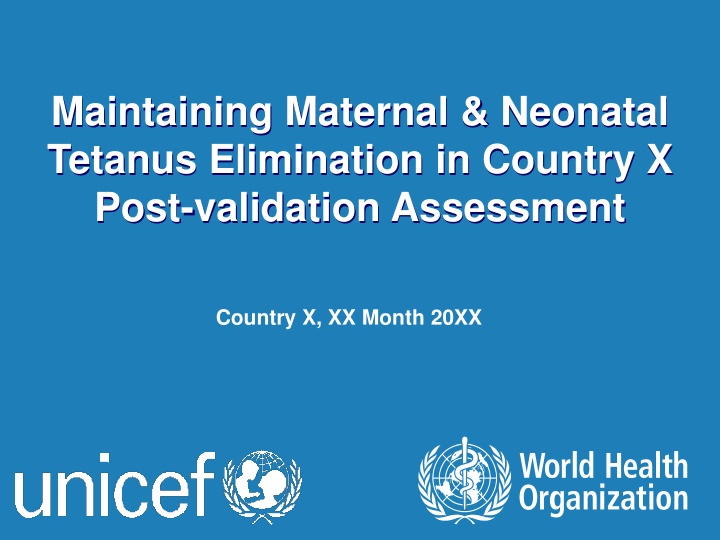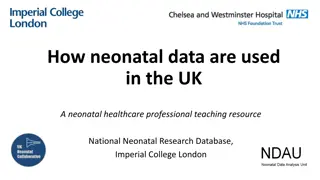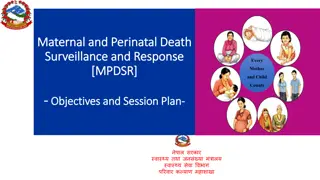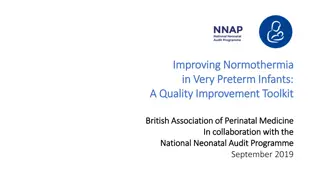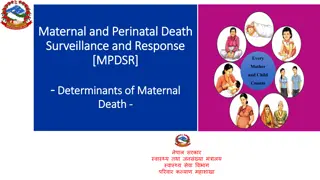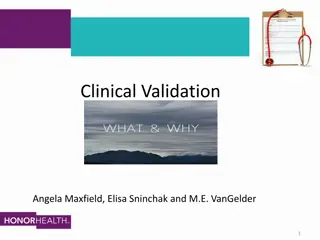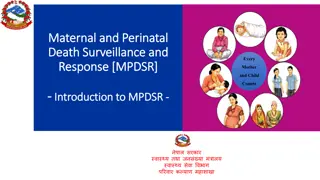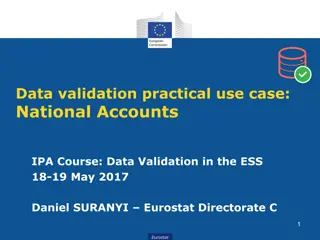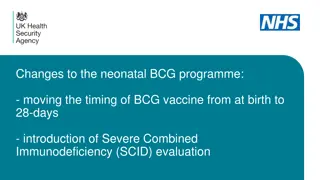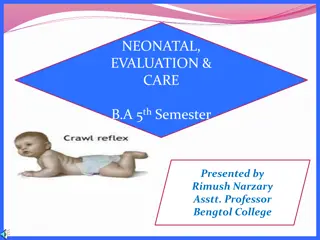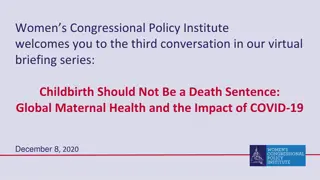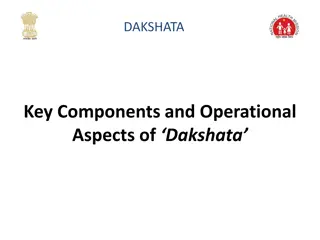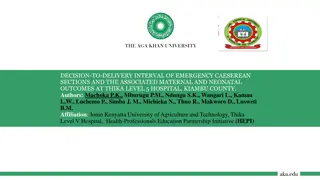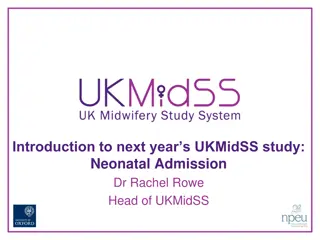Maintaining Maternal & Neonatal Tetanus Elimination: Post-validation Assessment in Country X
This post-validation assessment report delves into the efforts to maintain Maternal & Neonatal Tetanus Elimination in Country X. It includes findings from field assessments, recommendations for sustaining the elimination status, and the critical role of surveillance in addressing vulnerable populations. Objective is to maintain MNTE status through annual risk assessments and corrective measures based on data reviews and field visits to districts.
Download Presentation

Please find below an Image/Link to download the presentation.
The content on the website is provided AS IS for your information and personal use only. It may not be sold, licensed, or shared on other websites without obtaining consent from the author.If you encounter any issues during the download, it is possible that the publisher has removed the file from their server.
You are allowed to download the files provided on this website for personal or commercial use, subject to the condition that they are used lawfully. All files are the property of their respective owners.
The content on the website is provided AS IS for your information and personal use only. It may not be sold, licensed, or shared on other websites without obtaining consent from the author.
E N D
Presentation Transcript
Maintaining Maternal & Neonatal Tetanus Elimination in Country X Post-validation Assessment Country X, XX Month 20XX 1
Overview MNTE post-validation monitoring Data sets reviewed Field assessment and findings Conclusion Recommendations 2
Assessment teams District 1 Name X, affiliation X District 2 District 3 3
Neonatal tetanus (NT) elimination public health problem To achieve elimination: <1 NT case per 1,000 live births in a year in every district of a country If NT is eliminated, maternal tetanus (MT) is also considered eliminated = MNTE 4
Neonatal tetanus affects the vulnerable Women with no antenatal care (ANC) and no TT, home delivery and untrained attendance Women who went for ANC but received no TT Women who deliver at health center but practices may not be clean Women attended by midwife but unclean practices Critical role of surveillance and sharing of findings for corrective actions with both, EPI and Maternal, Neonatal and Child Health (MNCH) 5
MNTE post-validation monitoring Objective: maintain MNTE status (<1 NT case /1000 live births in every district) Country to conduct annual MNTE risk assessment as part of EPI and MCH reviews and undertake necessary corrective measures based on findings Conduct post-validation assessments Review available district data for 3 past years Undertake field visit to selected poor and medium performing districts for clarification using standardized tools Make appropriate recommendations to sustain the elimination status based on the consolidated findings 6
Data sets reviewed Desk review Core indicators NT rates, TT2+, clean delivery/skilled birth attendants coverage Surrogate indicators ANC, Penta1, Penta3, urban/rural Administrative vs survey (DHS) data Field assessment District and health facility level performance Community level survey of women who delivered a child within last 2 years 7
Algorithm to determine NT risk status 1. Reliable NT surveillance: a) zero reporting in operation, b) completeness of district health facility surveillance reporting 80%, c) adequate distribution of reporting sites (subjective), d) review of hospital records at least once a year. Delivery by a health staff or as defined by the national policy. 8 2.
Findings from desk review Coverage Data Surveillance System indicators TT2+ coverage pregnant Women Urban or rural (majority of pop'n)? Target Population under 1 Reported NT rate per 1000 LBs Hospital delivery rate Reported NT cases DTP1 DTP3 PAB SBA District Urban / Rural 2016 number % % % % number rate % % 2016 2016 2016 2016 2016* 2016 2016 2016 2016* District 1 District 2 District 3 District 4 District 5 District 6 District 7 District 8 District 9 District 10 9
Admin and coverage survey data Municipality District 1 District 2 District 3 2016 Admin DHS Admin DHS Admin DHS Penta3 TT2+ ANC1 SBA NT rate / 1000 LB 10
Findings from field visits Key indicators District 1 District 2 District 3 # women interviewed TT2+ coverage (%) TT5+ coverage (%) % of births in health facilities % putting traditional substance on cord % of women protected against tetanus by combined TT and skilled birth attendance 11
Findings from field visits Area Strengths Weaknesses Planning, monitoring & data use 12
Findings from field visits Area Strengths Weaknesses Human resources and capacity 13
Findings from field visits Area Strengths Weaknesses Immunization service delivery 14
Findings from field visits Area Strengths Weaknesses Vaccine, supply stock and cold chain management 15
Findings from field visits Area Strengths Weaknesses ANC and clean delivery (SBA, clean cord practices) 16
Findings from field visits Area Strengths Weaknesses NT Surveillance and reliability 17
Conclusions 18
